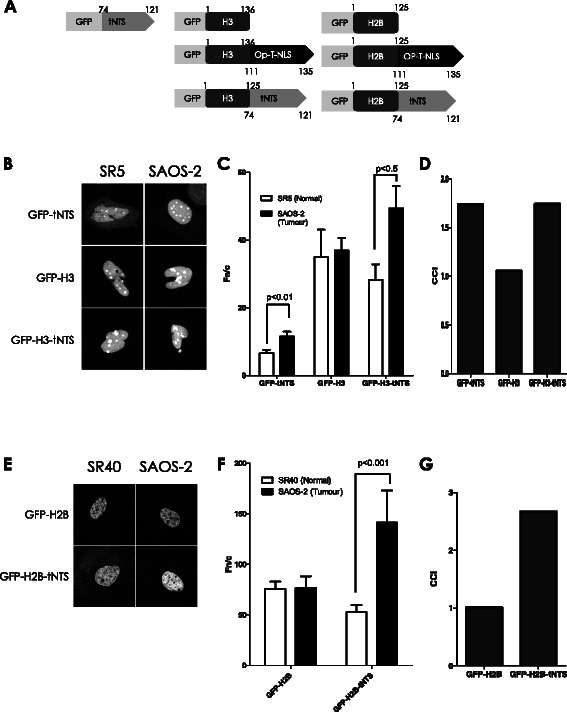Figure 1.

The tNTS confers tumour cell selectivity to core histone variants. A. Schematic representation of the engineered histone H2B and H3 proteins utilised in this study. GFP, Green Fluorescent Protein; H2B, histone H2B; H3, histone H3; Op-T-NLS, optimised NLS from the SV40 large tumour antigen (T-ag); tNTS, C-terminal domain of Apoptin (aa 74–121). B. SR5 (normal) or SAOS-2 (tumour) cells were transfected to express the indicated fusion proteins followed by CLSM analysis 6 h post-transfection. C. Analysis of digitised images such as those shown in B was used to determine the relative levels of nuclear accumulation as described in materials and methods. Results represent the mean Fn/c ± SEM (n > 10) and p values indicate significant differences as determined by the students t-test. D. Cancer comparative indexes (CCI) of the results shown in C, determined from a ratio of the Fn/c values. E. SR40 (normal) or SAOS-2 (tumour) cells were transfected to express the indicated fusion proteins and imaged by CLSM 6 h post-transfection. F. Images such as those in E were analysed as per C to determine the Fn/c ratio. G. CCI’s calculated as per D from the results in F.
